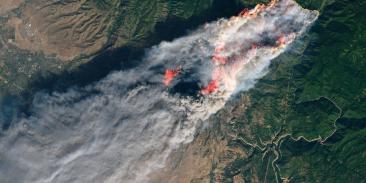Trump Proposal Will Dismantle Wetlands Protections, Increase Flood Risk
Statement from EDF Associate Vice President Will McDow on today’s new proposed Waters of the United States (WOTUS) rule from the Trump administration that will redefine which wetlands and waters have Clean Water Act Protections.
“We already spend billions annually responding to disasters that were created by building in risky areas. With today’s proposed WOTUS rule, commercial developers will be allowed to pave over wetlands to build unsafe housing that either floods or increases flooding to neighbors. This rule brings tremendous uncertainty and risk to our nation’s drinking water, flood protections and critical habitats. Based on our peer-reviewed analysis, new requirements for wetland protections could leave nearly all wetlands without Clean Water Act protections. Requirements in the new rule are not based in science, difficult to implement in practice and will create a dangerous lack of clarity.”
###
Notes for the editor
- In 2023, the U.S. Supreme Court ruled in in Sackett v. EPA to overturn decades of wetlands protections, drastically narrowing the scope of wetlands protected under the Clean Water Act. The Supreme Court ruled that only wetlands with a “continuous surface connection” that make it “indistinguishable” from a federal waterway are protected by the law. The court did not explicitly define a “continuous surface connection” or what makes a wetland and waterbody “indistinguishable.” This new rule aims to set definitions for those and other key terms.
- Under the proposed rule, the federal government will regulate wetlands only if they meet a two-part test: They must contain surface water throughout the “wet season,” and they must be touching a river, stream or other waterbody that also flows throughout the wet season.
- Based on our peer-reviewed analysis, a requirement of persistent surface water throughout the entire growing season would leave up to 91% of non-tidal wetlands in the contiguous United States without Clean Water Act protections. See the map.
- This new wetness test is arbitrary and there is no scientific evidence that this aligns with the intent of the Clean Water Act. Science shows that all wetlands are important for flood reduction, clean water and biodiversity, and the “drier” wetlands likely cut out of the Clean Water Act by this new rule provides some of the highest benefit levels.
- The intensity and duration of wet seasons vary significantly among different geographies and across years. The average “wetness” information that the rule proposes to use is outdated and not appropriate for use as a strict monthly “wet season” definition by which to evaluate the “wetness” of a wetland.
- Only half of the states in the U.S. have state-level wetlands protections, so a rollback of federal protections will leave large amounts of wetlands with no protections at all.
- Wetlands are critical. They support clean drinking water, remove pollution, soak up floodwater, recharge water sources and provide critical habitat for recreationally and commercially important wildlife.
With more than 3 million members, Environmental Defense Fund creates transformational solutions to the most serious environmental problems. To do so, EDF links science, economics, law, and innovative private-sector partnerships to turn solutions into action. edf.org
Latest press releases
-
EU Methane Regulation Emerges As Strategic Tool For Energy Security
December 10, 2025 -
Court Strikes Down Trump Administration’s Reckless Wind Energy Permitting Ban
December 8, 2025 -
Court Orders Trump Administration to Release Records of Secret Group That Wrote Report Attacking Climate Science
December 8, 2025 -
COMING SOON: An effort to weaken our popular chemical safety law
December 8, 2025 -
Groups File Lawsuit Challenging Trump EPA Final Rule That Delays Methane Pollution Protections from Oil and Gas Industry
December 4, 2025 -
New Statewide Survey: As Electricity Demand and Costs Skyrocket, Arizonans Support Building More Wind and Solar Energy
December 4, 2025










